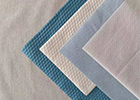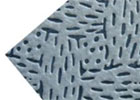Unveiling the Manufacturing Process of WP/PP Spunlace: A Dive into Technology and Innovation
Overview of WP/PP Spunlace Manufacturing Process
The manufacturing process of WP/PP spunlace involves several key steps that contribute to the production of high-quality nonwoven fabrics. It begins with the selection of the appropriate raw materials, which are then processed through specialized machinery and equipment.
Initially, the selected fibers, such as wood pulp, polyester, or polypropylene, are opened and blended to create a homogeneous mixture. This mixture is then converted into a slurry, which is then dispersed onto a moving belt or mesh. The slurry is spread evenly using a series of jets or needles, and the water content is controlled to ensure proper bonding of the fibers.
After the dispersion process, the wet sheet is subjected to mechanical or thermal treatment to enhance its physical properties. This includes processes like hydroentanglement, where high-pressure water jets interlock the fibers, or through heating to facilitate thermal bonding.
Once the fabric has gone through these processes, it is dried and wound onto rolls for further processing or distribution. Throughout the manufacturing process, strict quality control measures are in place to ensure the final product meets the required standards and performance criteria.
Table: Overview of WP/PP Spunlace Manufacturing Process:
| Step | Description |
|---|---|
| Raw Material Selection | Selecting appropriate fibers such as wood pulp or polyester |
| Fiber Blending | Mixing and blending the selected fibers |
| Slurry Formation | Converting the fibers into a homogeneous slurry |
| Dispersion | Spreading the slurry onto a moving belt/mesh |
| Bonding Process | Mechanical or thermal treatment to bond the fibers |
| Drying | Removing moisture from the fabric |
| Winding | Rolling the fabric onto rolls for further processing |
| Quality Control Measures | Ensuring the final product meets the required standards |
Introduction to WP/PP Spunlace Technology
WP/PP Spunlace technology is a cutting-edge manufacturing process that produces high-quality nonwoven fabrics. It involves the utilization of wood pulp, polyester, or polypropylene fibers, which are transformed into a homogeneous slurry and dispersed onto a moving belt or mesh. The slurry is then bonded together through mechanical or thermal treatments, resulting in a durable and versatile fabric.
WP/PP Spunlace technology offers numerous advantages. Firstly, it allows for the production of fabrics with a wide range of properties, including softness, absorbency, strength, and uniformity. This makes it suitable for various applications, such as wipes, medical products, and filtration media. Additionally, the process is highly efficient and cost-effective, as it eliminates the need for traditional weaving or knitting methods.
Moreover, WP/PP Spunlace technology enables manufacturers to meet the ever-evolving demands of the market by incorporating innovative advancements. These include automation technologies for improved precision and consistency, as well as sustainability practices to reduce environmental impact.
In conclusion, WP/PP Spunlace technology is revolutionizing the nonwoven fabric industry by providing a flexible, efficient, and sustainable manufacturing solution.
Key components involved in WP/PP Spunlace manufacturing
The key components involved in WP/PP Spunlace manufacturing are the slurry preparation system, the fiber dispersion system, the bonding system, and the drying system. These components work together to transform raw materials into high-quality nonwoven fabrics.
The slurry preparation system prepares a homogeneous mixture of wood pulp, polyester, or polypropylene fibers by breaking them down into a fine slurry. This slurry is then pumped into the fiber dispersion system, where it is evenly distributed onto a moving belt or mesh.
Next, the bonding system comes into play. This system applies mechanical or thermal treatments to the slurry, causing the fibers to bond together and form a cohesive fabric structure. The type of treatment used depends on the desired properties of the final product.
Finally, the drying system removes excess moisture from the fabric, ensuring its stability and durability. This step is crucial in preventing microbial growth and ensuring product quality.
By integrating these key components, WP/PP Spunlace manufacturing processes can produce nonwoven fabrics with a wide range of properties, making them suitable for various applications in the industry.

Raw Materials Used in WP/PP Spunlace Production
The production of WP/PP Spunlace involves the use of specific raw materials that contribute to the quality and performance of the final product. These materials include wood pulp, polyester, and polypropylene fibers.
Wood pulp, derived from trees, provides the strength and absorbency properties to the nonwoven fabric. Polyester fibers offer durability, elasticity, and resistance to chemicals, making the fabric suitable for applications requiring high tensile strength. Polypropylene fibers, on the other hand, provide softness and excellent moisture management capabilities.
The selection of raw materials is crucial to ensure the desired characteristics of the nonwoven fabric. Manufacturers consider factors such as fiber length, denier, and blend ratios to achieve the desired properties. The quality of the raw materials also affects the overall performance and consistency of the fabric.
By carefully selecting and combining these raw materials, WP/PP Spunlace manufacturers can create nonwoven fabrics with a wide range of properties, making them ideal for various applications in industries such as healthcare, automotive, and hygiene.
Quality requirements and selection criteria for raw materials
The quality of raw materials used in WP/PP Spunlace production plays a crucial role in determining the overall performance and properties of the nonwoven fabric. Manufacturers have specific quality requirements and selection criteria in place to ensure the desired characteristics of the final product.
When it comes to wood pulp, manufacturers look for fibers with adequate strength and absorbency properties. Fiber length, purity, and uniformity are essential factors to consider. Polyester fibers should possess excellent durability, elasticity, and resistance to chemicals. The denier and blend ratios of polyester fibers are carefully selected to achieve the desired tensile strength.
In the case of polypropylene fibers, softness and exceptional moisture management capabilities are sought after. The denier, melt flow rate, and blend ratios of polypropylene fibers are taken into account during the selection process.
To guarantee consistency in the nonwoven fabric, suppliers must provide materials that adhere to strict quality standards. Quality control measures such as testing for fiber content, strength, and uniformity are implemented to assess the suitability of the raw materials. Proper selection of raw materials ensures that WP/PP Spunlace fabrics meet the performance requirements for various applications in industries such as healthcare, automotive, and hygiene.
Role of each raw material in enhancing WP/PP Spunlace properties
Each raw material used in the production of WP/PP Spunlace nonwoven fabric plays a specific role in enhancing its properties. Wood pulp, for example, provides strength and absorbency to the fabric due to its long, pure, and uniform fibers. These fibers enhance the fabric's ability to absorb liquids efficiently. Polyester fibers contribute to the durability, elasticity, and chemical resistance of the fabric. The selected denier and blend ratio of polyester fibers determine the tensile strength of the final product. Polypropylene fibers, on the other hand, contribute to the softness and moisture management capabilities of the fabric. The denier, melt flow rate, and blend ratio of polypropylene fibers are carefully considered to achieve the desired properties. By selecting the appropriate combinations of these raw materials, manufacturers can optimize the performance and quality of WP/PP Spunlace fabrics, making them suitable for various applications in industries such as healthcare, automotive, and hygiene.
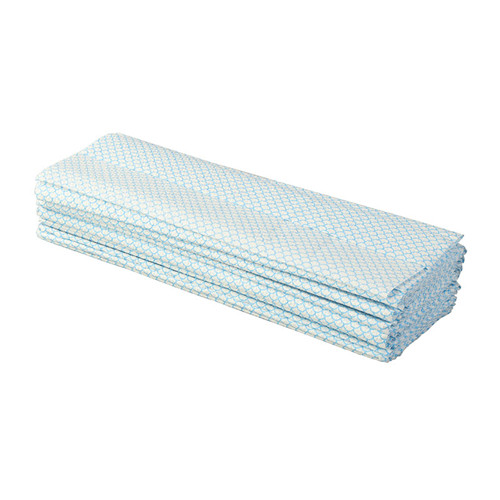
Equipment and Machinery in WP/PP Spunlace Manufacturing
To facilitate the production of WP/PP Spunlace nonwoven fabric, various types of equipment and machinery are required. This includes the following key components:
- Fiber Preparation Equipment: This equipment is used to prepare the raw materials such as wood pulp, polyester, and polypropylene fibers. It includes processes such as fiber opening, blending, and carding.
- Spinning System: The spinning system involves the use of high-speed jets to interlock the fibers and form the fabric. This process is known as hydroentanglement or spunlacing. The spinning system consists of a high-pressure water supply, spinning nozzles, and a conveyor belt system to carry the fabric.
- Drying and Bonding Equipment: After the fabric is formed, it needs to be dried and bonded. This is achieved through a combination of heat, pressure, and adhesive bonding techniques.
- Finishing Equipment: The finishing equipment is used to enhance the properties of the fabric such as softness, strength, and water repellency. It includes processes such as calendering, embossing, and coating.
In recent years, there have been significant advancements in the automation and precision technologies used in WP/PP Spunlace manufacturing. This enables greater control over the production process, improves efficiency, and ensures consistent quality in the final product. Manufacturers are also investing in high-speed machines and advanced monitoring systems to increase productivity and reduce downtime. Overall, the equipment and machinery used in WP/PP Spunlace manufacturing play a crucial role in achieving the desired fabric characteristics and ensuring a high-quality end product.
Types of machinery required for the production process
To facilitate the production of WP/PP Spunlace nonwoven fabric, several types of machinery are essential. These machines play a crucial role in each step of the manufacturing process.
- Fiber Preparation Equipment: This includes machinery for fiber opening, blending, and carding. For example, a fiber opener is used to loosen the compacted fibers, a blender mixes different types of fibers, and a carding machine aligns and combs the fibers into a web.
- Spinning System: The spinning system involves high-speed jets that interlock the fibers and form the fabric. It consists of a high-pressure water supply, spinning nozzles, and a conveyor belt system that carries the fabric.
- Drying and Bonding Equipment: After the fabric is formed, it needs to be dried and bonded. This requires machinery such as a drying oven or a hot air dryer, as well as equipment for adhesive bonding.
- Finishing Equipment: The finishing process enhances the properties of the fabric. Calendering machines, embossing machines, and coating machines are used to achieve desired characteristics such as softness, strength, and water repellency.
Having the right machinery ensures efficiency, precision, and consistent quality in WP/PP Spunlace manufacturing.
Automation and precision technologies utilized in WP/PP Spunlace manufacturing
Automation and precision technologies have revolutionized the WP/PP Spunlace manufacturing process, enhancing efficiency, accuracy, and product quality.
One key example of automation is the use of computerized control systems to monitor and regulate various stages of the production line. These systems ensure precise control over parameters such as water pressure, spinning speed, and drying temperature, resulting in consistent and uniform fabric properties.
Additionally, robotics and machine vision technologies have been implemented to automate tasks such as fiber blending, carding, and fabric handling. This not only reduces manual labor but also improves the accuracy and speed of these processes.
Furthermore, advanced sensors and real-time monitoring systems are utilized to detect any variations or defects in the fabric. This enables immediate adjustments to be made, ensuring the production of high-quality WP/PP Spunlace nonwoven fabric.
The integration of automation and precision technologies in WP/PP Spunlace manufacturing has not only increased productivity but also reduced production costs and wastage, making the process more environmentally sustainable.
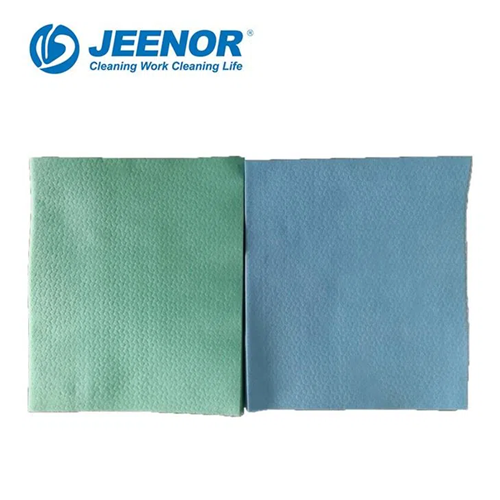
Innovation and Technology Advancements in WP/PP Spunlace Production
In recent years, WP/PP Spunlace production has witnessed significant innovation and advancements in technology. These developments have played a pivotal role in enhancing the efficiency and quality of the manufacturing process.
One notable technological advancement is the introduction of high-speed production machines that can achieve higher production rates while maintaining consistent fabric properties. These machines are equipped with advanced control systems that monitor and optimize various parameters in real-time.
Another innovation is the incorporation of nanotechnology in WP/PP Spunlace production. Nanofibers are added to the fabric structure, resulting in enhanced strength, filtration efficiency, and absorption capacity. This has broadened the application possibilities of WP/PP Spunlace in industries such as healthcare, filtration, and automotive.
Furthermore, there have been advancements in the development of sustainable and eco-friendly production processes. For instance, water-saving technologies and energy-efficient systems have been implemented to reduce the environmental impact of WP/PP Spunlace manufacturing.
Overall, these technological advancements and innovations have not only improved product quality and efficiency but also expanded the potential applications of WP/PP Spunlace nonwoven fabric.
Latest technological developments in WP/PP Spunlace manufacturing
In recent years, WP/PP Spunlace manufacturing has seen significant advancements in technology, resulting in improved efficiency and quality. One noteworthy development is the introduction of high-speed production machines. These machines are equipped with advanced control systems that monitor and optimize various parameters in real-time, allowing for higher production rates while maintaining consistent fabric properties.
Another important innovation is the integration of nanotechnology into WP/PP Spunlace production. By adding nanofibers to the fabric structure, the strength, filtration efficiency, and absorption capacity of the material are enhanced. This has opened up new possibilities for the application of WP/PP Spunlace in industries such as healthcare, filtration, and automotive.
Furthermore, there have been advancements in sustainable and eco-friendly production processes. Water-saving technologies and energy-efficient systems have been implemented to reduce the environmental impact of WP/PP Spunlace manufacturing.
Overall, these technological developments have not only improved the quality and efficiency of WP/PP Spunlace production but also expanded its potential applications, making it a versatile and sought-after nonwoven fabric in various industries.
Impact of innovation on product quality and efficiency
The continuous innovation in WP/PP Spunlace manufacturing has had a significant impact on product quality and efficiency. The introduction of high-speed production machines equipped with advanced control systems has allowed for higher production rates while maintaining consistent fabric properties. This has resulted in increased efficiency in the manufacturing process, leading to higher productivity and reduced production time.
Moreover, the integration of nanotechnology into WP/PP Spunlace production has greatly improved product quality. The addition of nanofibers to the fabric structure enhances its strength, filtration efficiency, and absorption capacity. This not only ensures the production of high-quality Spunlace fabrics but also expands its potential applications in various industries such as healthcare, filtration, and automotive.
Innovation has also played a pivotal role in the development of sustainable production processes in WP/PP Spunlace manufacturing. The implementation of water-saving technologies and energy-efficient systems has not only reduced the environmental impact but also improved the overall efficiency of the manufacturing process.
Overall, the impact of innovation on WP/PP Spunlace manufacturing has resulted in improved product quality, increased efficiency, and expanded application possibilities, making it a sought-after nonwoven fabric in various industries.
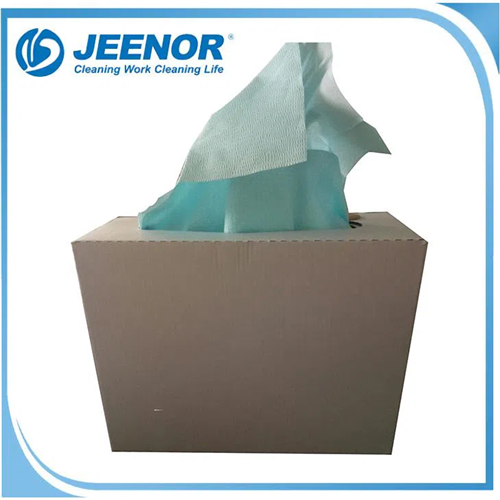
Quality Control and Testing in WP/PP Spunlace Manufacturing
Quality control measures play a crucial role in ensuring the overall quality and performance of WP/PP Spunlace fabrics. In order to meet the stringent quality requirements, various testing methods are employed throughout the manufacturing process.
The quality control process begins with the inspection and evaluation of raw materials. This includes checking the fiber quality, uniformity, and cleanliness. Any substandard or defective materials are rejected to maintain the highest standards.
During the production process, regular inspections are conducted to monitor the fabric's physical properties such as weight, thickness, tensile strength, and elongation. These tests ensure that the fabric meets the specified requirements for the intended application.
In addition to physical properties, WP/PP Spunlace fabrics undergo functional testing. This involves assessing parameters such as absorption capacity, liquid repellency, and filtration efficiency. These tests help determine the fabric's suitability for various applications, such as in healthcare or industrial settings.
Quality control measures also extend to the final product. Random samples are taken from the finished rolls for further testing to assess overall quality consistency. This ensures that every roll of WP/PP Spunlace fabric meets the desired standard.
The testing methods used include standard test procedures set by industry organizations, such as the Association for the Advancement of Medical Instrumentation (AAMI) or the American Society for Testing and Materials (ASTM). These tests provide objective and reliable data for quality evaluation.
Overall, the implementation of comprehensive quality control measures and testing ensures that WP/PP Spunlace fabrics consistently meet the required quality standards, providing customers with reliable and high-quality nonwoven fabrics.
Importance of quality control measures in ensuring product quality
Quality control measures play a vital role in ensuring the overall quality and reliability of WP/PP Spunlace fabrics. These measures are essential to meet the stringent quality requirements and provide customers with high-quality nonwoven fabrics.
By implementing comprehensive quality control measures throughout the manufacturing process, companies can identify and rectify any issues or defects early on, minimizing wastage and ensuring consistent product quality.
Quality control begins with the inspection and evaluation of raw materials, ensuring that only top-notch materials are used in production. Regular inspections and testing are conducted to monitor the fabric's physical properties and functional performance, such as weight, thickness, tensile strength, and absorption capacity.
These tests help determine the fabric's suitability for different applications and guarantee that it meets the specified requirements. Random sampling from finished rolls is also performed to assess overall quality consistency.
Adhering to standard test procedures ensures objective and reliable data for evaluating quality. In conclusion, quality control measures are instrumental in maintaining the highest standards of WP/PP Spunlace fabrics, instilling confidence in customers about the product's performance and reliability.
Testing methods used to evaluate the performance of WP/PP Spunlace
Testing methods are crucial for assessing the performance and quality of WP/PP Spunlace fabrics. These methods ensure that the fabrics meet the required specifications and provide reliable and consistent performance in various applications.
The physical properties of WP/PP Spunlace, such as weight, thickness, tensile strength, and elongation, are measured using standard test procedures. These tests determine the fabric's durability, strength, and ability to withstand stress during use.
Other important tests include absorbency, liquid repellency, and filtration efficiency. Absorbency testing evaluates the fabric's ability to absorb and hold liquids, while liquid repellency testing measures its resistance to liquid penetration. Filtration efficiency testing assesses the fabric's effectiveness in filtering out particles and contaminants.
Additionally, functional performance tests are conducted to evaluate specific properties for particular applications, such as barrier effectiveness, breathability, and abrasion resistance.
By utilizing these testing methods, manufacturers can ensure that WP/PP Spunlace fabrics meet the required quality standards and perform optimally across various industries, including hygiene, medical, filtration, and cleaning applications.
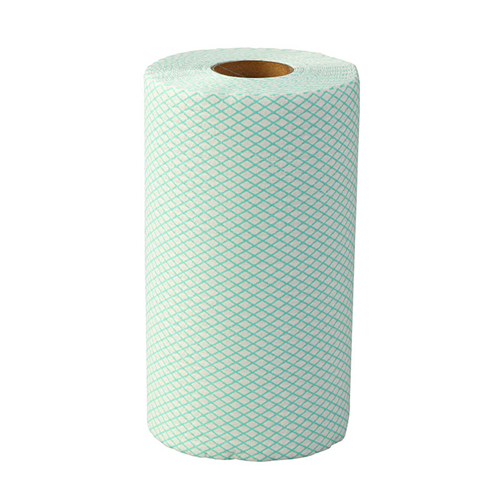
Future Prospects and Sustainability of WP/PP Spunlace Manufacturing
The future prospects of WP/PP Spunlace manufacturing look promising, driven by the growing demand for innovative and sustainable nonwoven fabrics. As industries continue to prioritize eco-friendly materials, WP/PP Spunlace offers an environmentally friendly alternative due to its biodegradable nature and potential for recycling.
Technological advancements are also expected to shape the future of WP/PP Spunlace production. Developments in fiber blending, web formation, and bonding techniques will enhance the fabric's performance and expand its application range.
Additionally, the sustainability practices adopted in WP/PP Spunlace manufacturing contribute to its long-term viability. These practices focus on minimizing waste generation, reducing energy consumption, and optimizing resource utilization, ensuring a more environmentally conscious manufacturing process.
Furthermore, the adoption of sustainable raw materials, such as recycled fibers and bio-based polymers, will further enhance the sustainability profile of WP/PP Spunlace fabrics.
Overall, the future of WP/PP Spunlace manufacturing is expected to be characterized by continued innovation, increased sustainability, and a wider range of applications, making it a promising solution for various industries.
Trends shaping the future of WP/PP Spunlace production
The future of WP/PP Spunlace production is being shaped by several key trends that reflect the evolving needs of industries and consumers. One such trend is the increasing demand for innovative and sustainable nonwoven fabrics. As industries strive to reduce their environmental footprint, there is a growing preference for materials that are biodegradable and recyclable, like WP/PP Spunlace.
Another trend is the continuous advancements in technology and machinery. These advancements are focused on improving fiber blending, web formation, and bonding techniques, resulting in enhanced fabric performance and a wider range of applications for WP/PP Spunlace.
Moreover, there is a growing emphasis on sustainability practices within the manufacturing process. This includes minimizing waste generation, reducing energy consumption, and optimizing resource utilization, all of which contribute to a more environmentally conscious production method for WP/PP Spunlace.
By embracing these trends, WP/PP Spunlace manufacturers can meet the demands of industries and consumers, ensuring a sustainable and innovative future for this versatile nonwoven fabric.
Sustainability practices adopted in WP/PP Spunlace manufacturing
In response to growing concerns about the environmental impact of manufacturing processes, WP/PP Spunlace manufacturers have adopted a range of sustainability practices. These practices aim to minimize waste generation, reduce energy consumption, and optimize resource utilization throughout the production process.
One key practice is the implementation of recycling and reuse initiatives. Manufacturers have implemented systems to collect and recycle any waste materials generated during the manufacturing process. By recycling these materials, the amount of waste going to landfill is reduced, and valuable resources are preserved.
Energy conservation is also a priority in WP/PP Spunlace manufacturing. Manufacturers have invested in energy-efficient machinery and have implemented measures to monitor and optimize energy consumption. These include using automated systems to regulate equipment usage and adopting energy-saving technologies.
Additionally, water management plays a crucial role in sustainability efforts. Manufacturers have implemented strategies to minimize water usage by implementing closed-loop systems and water recycling technologies.
By adopting these sustainability practices, WP/PP Spunlace manufacturers are minimizing their environmental impact and contributing to a more sustainable and responsible manufacturing process.




